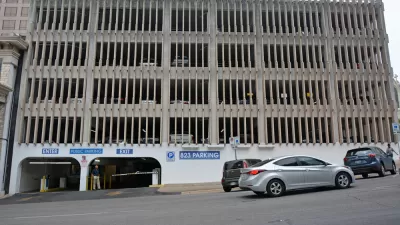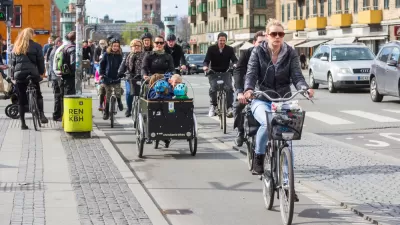Portland wants it both ways, but so do most places. But if Portland can't quit the car habit, which cities can?

Nadja Popovich and Brad Plumer in April wrote a feature-length, graphics- and image-laden article for the New York Times about Portland’s transportation planning agenda, posing a dilemma that could be repeated all over the country, but with special significance in Portland, a city known for innovative and climate-friendly approaches to land use and transportation planning.
Now the city faces a fresh challenge: To deal with traffic jams, state officials want to expand several major highways around Portland. Critics say that will only increase pollution from cars and trucks at a time when emissions need to fall, and fast.
This comes despite decades of efforts to get residents out of their cars, according to the article.
Over the past few decades, Oregon’s largest city has built an extensive light rail system, added hundreds of miles of bike lanes and adopted far-reaching zoning rules to encourage compact, walkable neighborhoods. Of the 40 largest U.S. metropolitan areas, Portland saw its residents drive the third-fewest miles per day in 2019, on average, behind only New York and Philadelphia.
The three highway projects identified in the article are the I-5 Rose Quarter Improvement Project, an interstate bridge replacement project sometimes referred to as the Columbia River Crossing, and a plan to add lanes and make other changes on I-205.
The political debate over the future of Oregon transportation planning centers on the conflicting goals of emissions reductions and congestion relief—in a city where transportation accounts for the vast majority of carbon dioxide emissions. The source article, linked below, includes discussions of induced demand, electric vehicles, transportation demand management, urban growth boundaries, and automobile dependency, and freeway removal, among other big planning concepts.
FULL STORY: Can Portland Be a Climate Leader Without Reducing Driving?

Maui's Vacation Rental Debate Turns Ugly
Verbal attacks, misinformation campaigns and fistfights plague a high-stakes debate to convert thousands of vacation rentals into long-term housing.

Planetizen Federal Action Tracker
A weekly monitor of how Trump’s orders and actions are impacting planners and planning in America.

In Urban Planning, AI Prompting Could be the New Design Thinking
Creativity has long been key to great urban design. What if we see AI as our new creative partner?

California Creates Housing-Focused Agency
Previously, the state’s housing and homelessness programs fell under a grabbag department that also regulates the alcohol industry, car mechanics, and horse racing.

Chicago’s Ghost Rails
Just beneath the surface of the modern city lie the remnants of its expansive early 20th-century streetcar system.

Baker Creek Pavilion: Blending Nature and Architecture in Knoxville
Knoxville’s urban wilderness planning initiative unveils the "Baker Creek Pavilion" to increase the city's access to green spaces.
Urban Design for Planners 1: Software Tools
This six-course series explores essential urban design concepts using open source software and equips planners with the tools they need to participate fully in the urban design process.
Planning for Universal Design
Learn the tools for implementing Universal Design in planning regulations.
planning NEXT
Appalachian Highlands Housing Partners
Mpact (founded as Rail~Volution)
City of Camden Redevelopment Agency
City of Astoria
City of Portland
City of Laramie





























